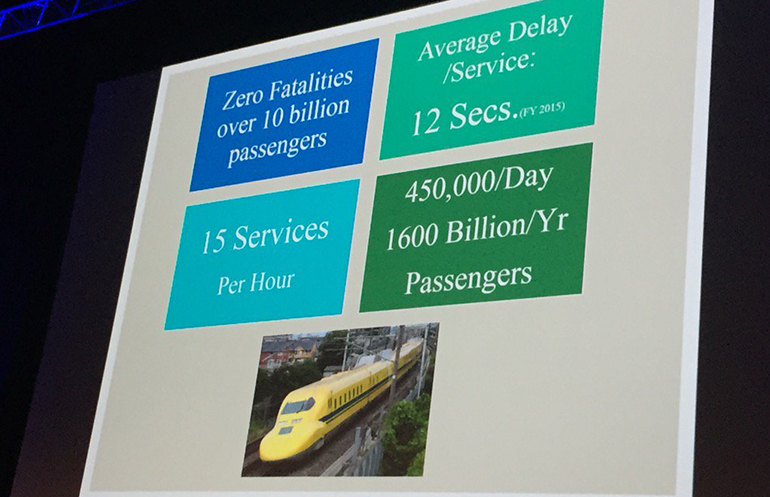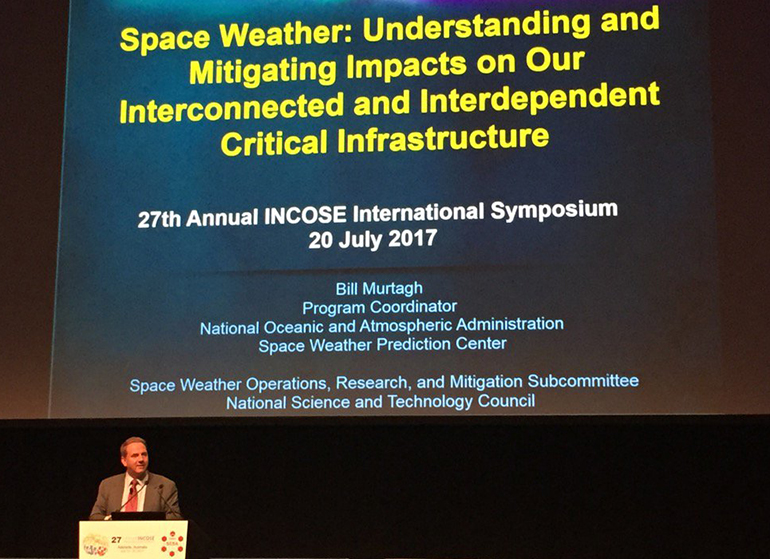Each year, generally right after the Fourth of July, the International Council of Systems Engineering (INCOSE) holds their International Symposium (IS). This year, the symposium was held in Adelaide, Australia.
The venue was the newly renovated Adelaide Convention Center. The theme of this year’s event was “Unlocking Innovation through Systems Engineering.” Attendance at this year’s event was a bit over 600 persons, many of whom were system engineers from Australia and the United States. But there were also attendees from around the globe. While the attendance at this year’s event did not break records, the number of individuals from a wide variety of disciplines and industrial domains reflects the growing interest in systems engineering as an enabler for the design and development of complex systems.
Quite a number of attendees were first-timers from Australia—a phenomenon that reflects the vibrant systems engineering community and interest “down under.” Systems engineering interest in Australia is dominated by engineering work in the defense and transportation markets. Bearing this out, there were a number of papers presented at the symposium in these two general areas. Further reflecting this emphasis, the symposium included keynote speakers from Australian Defense and the Japanese rail industry.
Air Vice Marshal Mel Hupfeld, Head of Force Design for the Australian Defence Force, addressed the symposium on the opening day. Hupfeld’s presentation, entitled, Force Design: Evolution not Revolution, dealt with the force planning process in the Australian Defense Forces. He noted that the current process is overburdened by administration and emphasizes process over outcomes. However, a change in defense design is moving toward a deliberate design process, one that allows for time to truly understand what is needed in future forces. Systems engineering is being employed to understand the complex nature of force design, and to (paradoxically) make complexity simple, easier to understand, and thereby more conducive toward the creation of a compelling argument for change.
On the second day of the symposium, Dr. Tomohiko Taniguchi provided a presentation entitled, The Japanese Bullet Train ‘Shinkansen’ System: Its Genesis and Safety Assurance. This presentation focused on the background and environment confronting the design team that created the 552 kilometer (343 mile) bullet train line from Tokyo to Osaka. Taniguchi made five key points regarding: foundational system design; upgradability for proven scalable design; safety in initial design; thinking the unthinkable; and political economy considerations in design.

Dr. Taniguchi presented some impressive statistics about the bullet train in his address on the second day of the symposium.
On the final day of the symposium, Mr. Bill Murtagh from the National Oceanic and Atmospheric Administration (NOAA) gave a presentation entitled, Space Weather: Understanding and Mitigating Impacts on Our Interconnected and Interdependent Critical Infrastructure. This presentation was particularly interesting from the standpoint of system thinking. Murtagh detailed the numerous ways in which solar weather—meaning changes in the sun’s surface and atmosphere—have an effect on atmospheric conditions here on Earth. The changes can affect many things.

Bill Murtagh of NOAA closed out the final day of the symposium with a talk on space weather.
Because of this, NOAA monitors solar weather to predict changes in our atmosphere and warn interested parties of future conditions, including, of all things, homing pigeon races. It turns out that homing pigeons have an internal bio-compass composed of the mineral magnetite, which they use to navigate. This navigation method is so sensitive that geo-magnetic storms here on Earth, caused by changes in the sun, can cause these pigeons to lose their way.
While the speakers I’ve mentioned here stood out to me, there were many other speakers and papers of note throughout the event. All keynotes (along with keynotes from the past three symposia) are available to everyone on the INCOSE YouTube channel. Papers from the 2017 INCOSE International Symposium are expected to be available to all INCOSE members via the INCOSE website later this year.







Great summary Ron, I’m sure you’ve enjoyed it. Space weather seem great, still 5 stars or more to the bullet train picture! Thank you